| Listing 1 - 8 of 8 |
Sort by
|
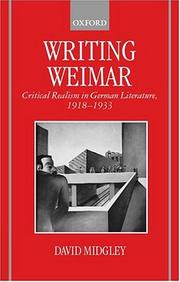
ISBN: 0198151799 0191672831 9780198151791 Year: 2000 Publisher: Oxford: Oxford university press,
Abstract | Keywords | Export | Availability | Bookmark
 Loading...
Loading...Choose an application
- Reference Manager
- EndNote
- RefWorks (Direct export to RefWorks)
Writing Weimar shows how German literature between 1918 and 1933 is related both to the politics of the time and to longer-term cultural developments. Individual chapters discuss developments in particular genres and the significance of the term Neue Sachlichkeit, as well as the treatment of the city, technology, and the First World War.
Littérature réaliste --- Neorealism (Literature) --- Neorealisme (Literatuur) --- Néoréalisme (Littérature) --- Realism (Literary movement) --- Realism in literature --- Realisme (Letterkundige beweging) --- Realisme (Literaire beweging) --- Realisme in de literatuur --- Realistische literatuur --- Réalisme (Mouvement littéraire) --- Réalisme dans la littérature --- German literature --- Realism in literature. --- History and criticism. --- 830 "19" --- -Realism in literature --- Magic realism (Literature) --- Mimesis in literature --- Duitse literatuur--20e eeuw. Periode 1900-1999 --- History and criticism --- 830 "19" Duitse literatuur--20e eeuw. Periode 1900-1999 --- 20th century --- German literature - 20th century - History and criticism.
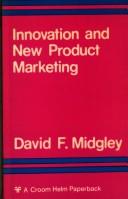
ISBN: 0856642606 0856642657 9780856642609 Year: 1977 Publisher: London : Croom Helm,
Abstract | Keywords | Export | Availability | Bookmark
 Loading...
Loading...Choose an application
- Reference Manager
- EndNote
- RefWorks (Direct export to RefWorks)
Economic production --- Product strategy --- New products --- Diffusion of innovations --- Product management --- Produits nouveaux --- Innovations --- Produits commerciaux --- Diffusion --- Gestion --- 65.018 --- Brand management --- Management, Product --- Marketing --- Innovations, Diffusion of --- Acculturation --- Communication --- Culture diffusion --- Technological innovations --- New product development --- NPD (Marketing) --- Product development --- Products, New --- Commercial products --- Industrial design --- Descriptions, quality, grade (of business, work, products etc.) --- Management --- Diffusion of innovations. --- New products. --- Product management. --- 65.018 Descriptions, quality, grade (of business, work, products etc.)
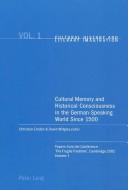
ISBN: 3039101692 0820469793 9783039101696 Year: 2004 Volume: 2 Publisher: Oxford: Lang,
Abstract | Keywords | Export | Availability | Bookmark
 Loading...
Loading...Choose an application
- Reference Manager
- EndNote
- RefWorks (Direct export to RefWorks)
Collective memory --- Literature and history --- Memory --- Social aspects --- Europe [German-speaking ] --- Congresses --- Intellectual life --- History --- Historiography --- Collective memory - Europe, German-speaking - Congresses. --- Literature and history - Congresses.
Book
ISBN: 0745605389 9780745605388 Year: 1991 Publisher: Cambridge: Polity press,
Abstract | Keywords | Export | Availability | Bookmark
 Loading...
Loading...Choose an application
- Reference Manager
- EndNote
- RefWorks (Direct export to RefWorks)
Political philosophy. Social philosophy --- Art --- --Éthique --- --Modernité --- --Postmodernisme --- --Adorno, Theodor Wiesengrund, --- 316.323.9 --- Postmoderne maatschappij. Sociologie van het postmodernisme --- 316.323.9 Postmoderne maatschappij. Sociologie van het postmodernisme --- Éthique --- Modernité --- Postmodernisme --- Adorno, Theodor Wiesengrund, 1903-1969
Book
ISBN: 0262231603 9780262231602 Year: 1991 Volume: vol *7 Publisher: Cambridge (Mass.): MIT Press,
Abstract | Keywords | Export | Availability | Bookmark
 Loading...
Loading...Choose an application
- Reference Manager
- EndNote
- RefWorks (Direct export to RefWorks)
Aesthetics [Modern ] --- Critical thought --- Esthetica (Moderne filosofie) --- Esthetica [Moderne ] --- Esthétique (Philosophie moderne) --- Esthétique moderne --- Ethics [Modern ] --- Ethiek [Moderne ] --- Ethique moderne --- Filosofie van het postmodernisme --- Modern aesthetics --- Moderne esthetica --- Philosophie postmoderniste --- Postmodernism --- Postmodernisme --- Postmodernisme (esthétique) --- Postmodernisme (filosofie) --- Postmodernisme (philosophie) --- Aesthetics, Modern. --- Ethics, Modern. --- Critical theory. --- Postmodernism. --- Critical thought.
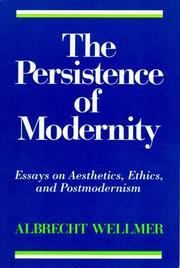
ISBN: 9780262731096 0262731096 Year: 1993 Publisher: Cambridge (Mass.): MIT Press,
Abstract | Keywords | Export | Availability | Bookmark
 Loading...
Loading...Choose an application
- Reference Manager
- EndNote
- RefWorks (Direct export to RefWorks)
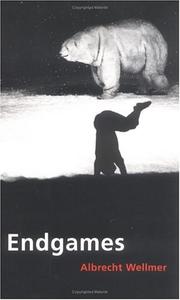
ISBN: 0262731339 9780262731331 Year: 1998 Publisher: Cambridge (Mass.): MIT Press,
Abstract | Keywords | Export | Availability | Bookmark
 Loading...
Loading...Choose an application
- Reference Manager
- EndNote
- RefWorks (Direct export to RefWorks)
A common theme of this set of thirteen essays by one of the major figures in contemporary German philosophy is the idea of a postmetaphysical modernity. In his preface Wellmer relates the title of his book, Endgames, to this common theme: The historical utopias of the Marxist tradition and the programs of ultimate justification in the Kantian tradition are both endgames within metaphysics, the deconstruction of those utopias and programs of ultimate justification are endgames played with metaphysics, and the game with an end as ultimate telos--the end(s) of history, the end(s) of knowledge, the end(s) of human life--is metaphysics. The title, Endgames, finally also refers polemically to postmodernist games with an end of modernity; as opposed to these, Wellmer defends the fragile moral and political substance of the modernity that postmodernists attempt to overcome--and that sense of what needs to be preserved of the modern tradition for a postmetaphysical modernity is what makes his writings unique.In the first of the book's three parts, "Negative and Communicative Freedom," Wellmer focuses on political philosophy, examining in particular the links and tensions between liberal basic rights and modern ideas of democracy. In Part II, "Postmetaphysical Perspectives," he attempts to develop a postmetaphysical perspective on aesthetics and metaphysics (with and against Adorno), on the problem of truth (with and against Richard Rorty, Jurgen Habermas, and Karl-Otto Apel), and on hermeneutics (with and against Hans-Georg Gadamer and Karl-Otto Apel). Part III, "Images of the Times," contains occasional pieces on Ludwig Wittgenstein, the Frankfurt School, Hans Jonas, and architecture. The book closes with an appended critical essay on Hannah Arendt, reflecting the importance of Arendt's political philosophy to Wellmer's work.
Book
ISBN: 0043800173 9780043800171 Year: 1973 Publisher: London: Allen,
Abstract | Keywords | Export | Availability | Bookmark
 Loading...
Loading...Choose an application
- Reference Manager
- EndNote
- RefWorks (Direct export to RefWorks)
| Listing 1 - 8 of 8 |
Sort by
|

 Search
Search Feedback
Feedback About UniCat
About UniCat  Help
Help News
News